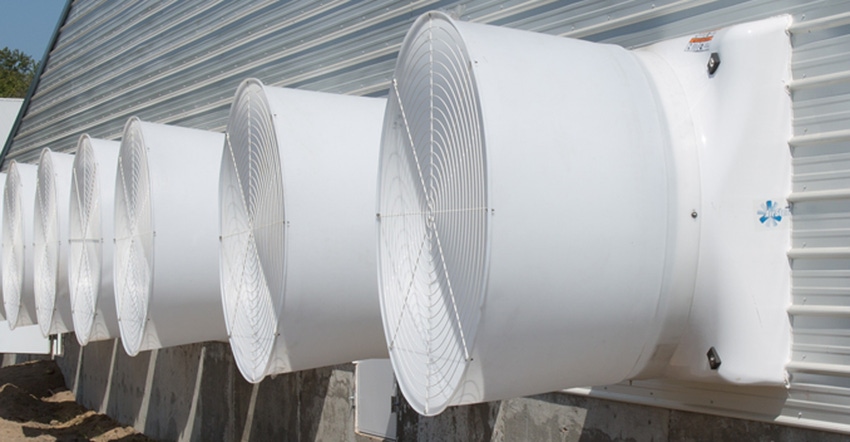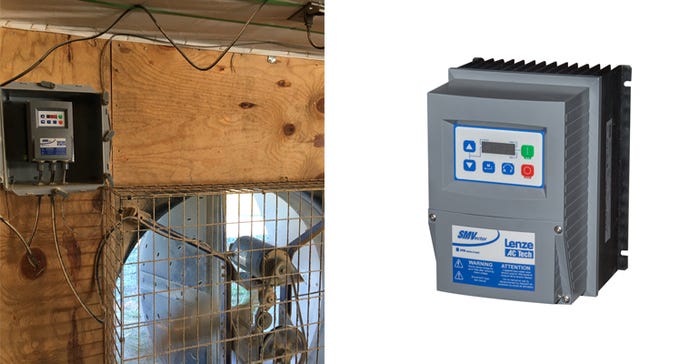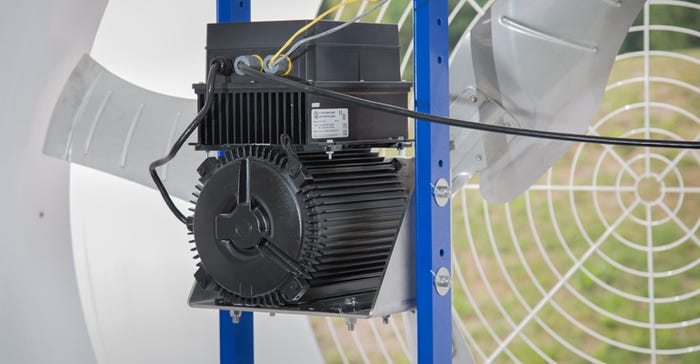Vent Notes #4 - Fan speed control … good, better, best
We compare three methods of controlling variable speed fans.
December 14, 2019

Sponsored Content
Voltage regulation (Triac)
This method is the simplest and most common method for reducing the cubic feet per minute output of fans. A voltage reduction device, called a triac, reduces the amount of voltage to the motor, slowing the revolutions per minute, which decreases the amount of air moved. Controlling motor speed by varying voltage has several limitations.
1) Heat buildup. Even with the voltage reduced, the motor still receives the same amount of power. The extra power doesn't just disappear but instead converts to heat. The excess heat buildup limits variable speed fans to 40% of their maximum output to prevent burnout.
2) Less efficient. Because of the limits on the low speed, variable-speed fans must be smaller to meet the desired lower CFM rates. The smaller fans are less efficient by design, and power consumption per watt increases.
3) Fixed output. A strong headwind blowing against a variable-speed fan or increased static pressure will reduce its output. Triac-based controls do not automatically increase the voltage to compensate for the decreased RPMs.

VFD - Variable frequency drive
Instead of regulating voltage, a VFD controls speed by sending input frequency or hertz to an inverter rated, three-phase motor. An external controller receives a signal from the ventilation control and sends the corresponding signal to the motor in hertz. There are several advantages to VFD fans compared to voltage-regulated fans.
More efficient. Slowing a VFD fan down also reduces its energy consumption, unlike voltage regulation.
Longer motor life. VFD motors run cooler since the excessive energy typically lost using a triac is not converted to heat.
Fewer fans. VFD allows the use of large summer fans for winter minimum ventilation.
Convert existing fans. Replacing the existing motor with an inverter rated, three-phase motor, and adding an external VFD controller makes the conversion possible for most fans.
A VFD-controlled fan does not change the fan speed to compensate for headwinds or increased static pressure. A strong wind blowing against the fan will decrease its output, much like a voltage-controlled fan.

ECM - Electronically commutated motor
The integrated electronics, inside an ECM motor, receive a signal from the house controller and determines the desired RPM. It continues to monitor the shaft RPMs and adjust the power inputs to maintain the correct speed.
ECM fans have several significant advantages.
1) Precise variable speed output. Upon receiving a signal from the house controller, the motor microprocessor determines the correct speed for the desired ventilation rate. It continues to monitor the shaft RPMs and adjust the power inputs to maintain the right speed.
For example, if a fan's maximum is 700 RPM, and the motor receives a 5-volt signal, it will adjust the power to 350 RPMs. If the RPM decrease, because of higher static pressure or a headwind, more power is sent to the motor to maintain the desired fan speed.
2) Reduced maintenance. The direct-drive motor eliminates shaft bearings, pulley and belts: no more costly and time-consuming repairs and adjustments.
3) Most efficient. At full load, the Infinity motor is 10% more efficient than conventional alternating current motors. The Infinity motor maintains its high efficiency even with lower fan speeds.
4) Extended motor life. Infinity motors operate at cooler temperatures than comparable voltage-controlled AC motors, even at slower speeds. High operating temperatures are one of the leading causes of motor failure.
5) Fewer fans. Because of the Infinity fan's ability to operate effectively at low airflow rates, minimum ventilation rates are met without using smaller, less efficient fans.
Both VFD and ECM motors offer improved control and efficiency over voltage-regulated speed control.
About the Author(s)
You May Also Like



